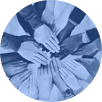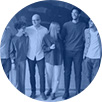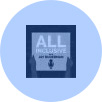
The Google for People with Spinal Cord Injury
“Google it” has nowadays become the go-to response to questions we actually don’t know how to answer. But imagine you or someone you love, have just become paralyzed, due to an injury or a disease and you find yourself learning how to use a wheelchair, or wondering whether you could still be a parent. Google can give you a lot of hits for your questions, but sifting through them all to maybe find the answer you need can be a daunting task. This kind of problem is the birthplace of AbleThrive.com.
“We live in a world where Netflix tells you which movie to watch next, but we leave families with disabilities to figure out everything on their own,” says Brittany Déjean, Director and Founder of AbleThrive. “People have more expectation about entertainment than approaching how to live with a disability.” Déjean’s realization comes from personal experience. When she was twelve years old, her dad became paralyzed in a car accident, which she says gave her a unique window into the experience of having a family member with a sudden disability. “We lived outside of Philadelphia and by nature of luck only one hour from the best spinal cord injury hospital in the country,” Déjean says. Through these circumstances, she and her family met many others who were living with spinal cord injury. “They were years ahead of us, so they were mentors who helped us realize that my dad would live a normal life.” But Déjean also quickly realized how lucky they had been to have all these resources and mentors available to them. Therefore she says that she wants “AbleThrive to be the place you go … if you’ve had your life touched by disability.”
The website allows a user to choose a topic of interest to them—life skills, parenting, relationships, activities, or travel—and then there is a filter. It asks what the user’s trunk, leg, arm, and finger mobility is. In other words, it lets the user customize the search results on the basis of their own abilities. So if you’re a new parent with spinal cord injury and have mobility in only one arm, AbleThrive has an article on how to change a diaper with only one arm. Much like a standard search engine, the resources and articles AbleThrive draws on come from a wide variety of other sources. “We facilitate this through an ally network,” says Déjean. The members span thirteen different countries and range in size from The Christopher and Dana Reeve Foundation to independent bloggers and unless it’s a news story, all content on AbleThrive is curated from this collaboration with allies. “We have 160 organizations, companies, bloggers, and hospitals … and we have an open invitation to anyone else.”
While right now their database is focused on people with spinal cord injuries, AbleThrive hopes to expand to many other disabilities in time. “We can’t do everything for everyone at once, but by building this network [it’s a start],” says Déjean. “I look at us having parallel missions—one is assuring that families with disabilities have the resources to thrive and the second is challenging the perception of disability in society.” To this end Déjean organized the campaign “This is How I”. It showcases several people with disabilities, from famous faces like Nicholas Vujicic, and Speechless star Micah Fowler to everyday common people with disabilities.
So far the campaign has organically garnered over a quarter million views and what Déjean is especially excited about is that the video “is getting out of the disability community and starting to undermine negative perceptions of disability in society. It is leaking into the mainstream community.”
Her realization that sharing simple, everyday representations of people with disabilities just going about their lives was radical and revolutionary came after she shared a video of her father—who is a wheelchair user—dancing with her at her wedding. That particular video has over 1.5 million views and “the majority of comments were “go dad!” and “father-daughter love is special” and it made me realize they were relating to my dad as a human, and not as someone with a disability,” says Déjean. She sees this connection between people without disabilities and those with as the fundamental bridge that undermines stigma toward people with disabilities. If we can view disability as simply another form of human diversity on the continuum of what is normal, we may reach a point where resources like AbleThrive won’t be so desperately needed for answers to everyday questions.
Meanwhile AbleThrive is not only a truly powerful step in the direction of visibility and resources, but they continue to improve all the time. As a matter of fact, if you are a person with a disability, specifically paralysis, AbleThrive is looking to get some insights as they work towards their goal of ensuring everyone has the resources they need to thrive with paralysis. You can contribute to their efforts through this 5 minute survey: https://ablethrive.typeform.com/to/EF2Mo9
And if you are a blogger or an organization working and writing on paralysis, and would like to join AbleThrive’s ally network, you can contact the AbleThrive team here.
About the author Kristina Kopić, better known as Tina, is a former academic, a writer, a martial artist, and a fan of deconstructing all social constructs, especially those of gender, race, and disability in order to expose and challenge their injustices and create a more inclusive and fair world. She is the Advocacy Content Specialist at the Ruderman Family Foundation, lives with her wife, their two cats, and is currently dabbling in rugby.
Stay Included
To stay up to date on our most recent advocacy efforts, events and exciting developments, subscribe to our newsletter and blog!





















